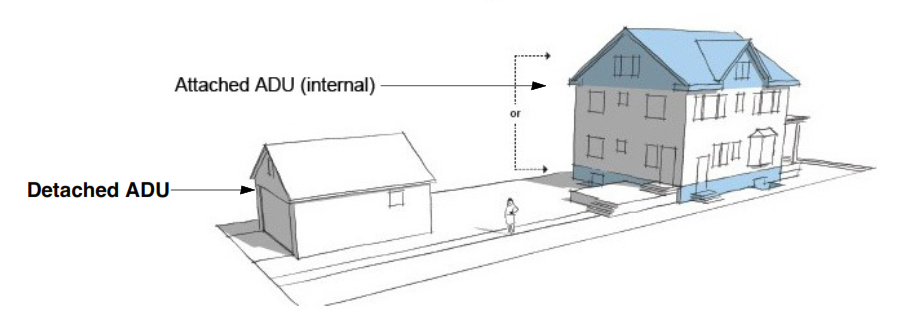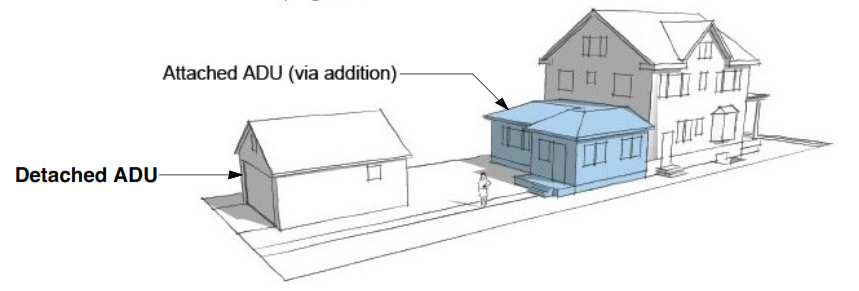Septic Implications of ADU’s in Suffolk County
Navigating the approval process with the Suffolk County Health Department (SCDHS) can be complex, especially when considering the addition of an accessory apartment or accessory dwelling unit (ADU). To simplify the process, here is a breakdown of the septic implications of various accessory apartment addition/conversion scenarios. Our goal is to provide clarity on when a…
Frank Cuffaro
January 22, 2024
6 mins read

Navigating the approval process with the Suffolk County Health Department (SCDHS) can be complex, especially when considering the addition of an accessory apartment or accessory dwelling unit (ADU). To simplify the process, here is a breakdown of the septic implications of various accessory apartment addition/conversion scenarios. Our goal is to provide clarity on when a septic upgrade is required and if so, whether an I/A-OWTS is required.
General Requirements to Reuse a Septic System
In any ADU addition/conversion scenario, the following must be true to propose the re-use of any existing septic system:
- Prior SCDHS approval on file
- System must include enclosed septic tank (i.e., not a cesspool)
- System must be constructed of precast concrete (not block)
- System must be in good working order
If all the above requirements are not met, an I/A-OWTS upgrade would be required.
In the following sections, we will outline the septic system implications of several different ADU addition/conversion scenarios:
Scenario #1: Attached ADU (Conversion of existing space)
This scenario would include the conversion of existing building area, such as a basement, den, area above attached garage, etc. into an accessory apartment.

Courtesy of Val Florio, AIA Architect
If your project meets all the criteria below, you could potentially proceed without the need for a septic upgrade:
- Prior SCDHS Approval – Final number of bedrooms does not exceed previous approval.
- Not Considered “Major Reconstruction” – A project can be classified as a major reconstruction if the project cost is greater than 50% of the appraised value of the structure where the work is being performed. See form WWM-306.
- No Increase in Gross Floor Area – No change in footprint or square footage from previous approval.
If the final number of bedrooms exceeds the previous approval of (4), but does not exceed (5), and conditions #2 and #3 are both met, then an I/A-OWTS is not required, but a larger traditional system or a an additional traditional system may be installed.
In any other case, in I/A-OWTS upgrade would be required.
Scenario #2: Attached ADU (Addition – 1st or 2nd story)
This scenario would include the construction of an addition onto the main residence to house the ADU.

Courtesy of Val Florio, AIA Architect
If your project meets all the criteria below, you could potentially proceed without the need for a septic upgrade:
- Prior SCDHS Approval – Final number of bedrooms does not exceed previous approval.
- Not Considered “Major Reconstruction” – A project can be classified as a major reconstruction if the project cost is greater than 50% of the appraised value of the structure where the work is being performed. See form WWM-306.
- Addition Does Not Interfere with Existing Septic Location – All appropriate SCDHS septic setbacks can be maintained.
If all the above requirements are not met, an I/A-OWTS upgrade would be required.
Scenario #3: Detached ADU (New Structure/Addition/Conversion)
This scenario would include a detached garage, art studio, pool house conversion or addition as well as a ground up new construction that is fully detached from main house.

Courtesy of Val Florio, AIA Architect
If your project meets all the criteria below, you could potentially proceed with connecting a detached ADU to an existing septic system:
- Prior SCDHS Approval – Final number of bedrooms does not exceed previous approval.
- No Work Being Done to the Main House – Project scope is limited to the detached ADU.
- Logistically Feasible to Connect Waste Line to House/Existing Septic – It must be possible to connect a waste line to the existing residence or septic tank in a code compliant manner.
- New ADU/Addition Does Not Interfere with Existing Septic Location
- All appropriate SCDHS septic setbacks can be maintained.
In any other case, a new, dedicated I/A-OWTS installation would be required for the detached ADU.
Examples:
Scenario 1: Jane has previous approval from SCDHS for a four-bedroom system. Jane utilizes memorandum #19 to confirm her bedroom count of three, next she confirms her project does not qualify as a major reconstruction. If Jane plans to renovate and add a bedroom or accessory apartment approved by the town with no change to the footprint, she does not need to upgrade to an I/A since she has previous approval for four bedrooms.
Scenario 2: Jack has previous approval from SCDHS for a four-bedroom system and confirms using memorandum #19 he currently has four bedrooms existing. Jack plans to renovate an unfinished basement or garage and add a town approved accessory apartment without changing the existing footprint, increasing his bedroom count to five. Jack will need to obtain a new approval from the SCDHS and install a larger capacity traditional septic system.
Calculating Bedroom Count: The Suffolk County Health Department bedroom counting system is a key factor in determining whether you need approval. The Suffolk County Department of Health Services Memorandum #19 offers a breakdown of how the county would determine your bedroom count. For a detailed breakdown of the guidelines and it’s implications along with some examples, take a look at our Bedroom Counting for Septic System Sizing article.
Disclaimer: Determining if a septic upgrade is required is a nuanced process that requires interpretation of rules from multiple municipalities along with a detailed analysis of the proposed work. If unclear, please reach out to a septic engineer for an analysis of your proposed work and property.